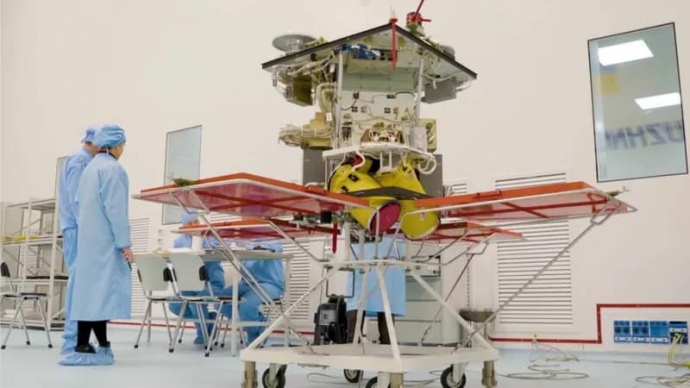Update: The SpaceX has successfully launched the Transporter-3 mission."Ukrainian satellite Sich: separation confirmed," the SpaceX host of the launch internet stream reported at T+01:23:05.
The 29-minute launch window opens at 10:25 a.m. EST (15:25 UTC or 17:25 Kyiv Time). If everything goes according to plan and the mission is a go, the Ukrainian satellite will be deployed at about one hour and 23 minutes into the flight after the liftoff. If the launch would be canceled, a backup opportunity would be available in 24 hours on 14 January.
Transporter-3 mission
The mission Transporter-3 is a so-called smallsat dedicated rideshare mission by SpaceX, in which the company launches a number of satellites which includes up to 200 kg of payload mass for various customers for as low as $1 million on one rocket. The mission's target is a sun-synchronous orbit. This would be SpaceX's third rideshare mission.
This mission is comprised of 105 satellites for commercial and government customers. Most of the payloads are microsatellites (10-100 kg) and nanosatellites (1-10 kg), including CubeSats, PocketQubes, and orbital transfer vehicles.
.
SpaceX is going to launch the Transporter-3 atop its Falcon 9 Block 5 rocket from the launchpad SLC-40 on Cape Canaveral, Florida, USA. The rocket's first stage booster is "flight-proven" as it previously launched nine other missions, including the piloted Crew Demo-2, as well as unmanned ANASIS-II, CRS-21, Transporter-1, and five Starlink missions, according to SpaceX. The first stage is going to return to the cape to land on Landing Zone 1 (LZ-1).

Ukrainian satellite Sich-2-30
Designed by the design bureau Pivdenne (or Yuzhnoye) in the central-Ukrainian city of Dnipro, the Ukrainian Sich-2-30 satellite is designed to obtain digital photos of the Earth's surface in the visible and near-infrared ranges, namely
- 0.51-0.59 μm (green),
- 0.61-0.68 (red),
- 0.80-0.89 (near IR)
- and 0.51-0.90 (pan chrome).
Additionally, the satellite is used to monitor the ionosphere of the planet.

According to Volodymyr Taftay
, the chief of the State Space Agency of Ukraine, the expected service life of the satellite is three years.
It's been a while since the last launch of a Ukrainian satellite. The last time Ukraine launched its previous vehicle Sich-2 back in August 2011 atop the Dnipro-1 launch vehicle, the domestically-manufactured space rocket made at Pivdenmash or, as it is also known by its Russian-language name, Yuzhmash. The rocket was launched from a base in Orenburg Oblast, Russia. Unfortunately in December 2012, communication with the satellite was lost.
According to BBC News Ukraine, it later turned out that it was a failure of a Russian-made battery that led to the loss of the Sich-2. So, Sich-2 managed to operate for just over a year rather than five years expected by the sat's developers.
Under the recently drafted National Targeted Scientific and Technical Space Program for 2021-2025, Ukraine is going to launch eight Ukrainian satellites into orbit. Volodymyr Taftay said that the production of heavy-class rocket and space complexes (Zenith-7H), medium-range (Cyclone-4M), and light (Cyclone 1) launch vehicles are also in the works, as well as developing an ultralight complex. Additionally, the space program lays down plans to put in mass production components for ESA’s Antares and Vega launch vehicles.
Further reading:
- How Ukraine wants to make its space industry great again
- Top-10 space achievements of independent Ukraine
- Revival of Ukrainian space sector: A viable new prospect?
- Dnipro will not let Ukraine's space glory be forgotten
- Kyiv Polytechnic Institute to design and market satellites with energy NGO
- UK-Ukrainian satellite launch vehicle developer Skyrora to test its first rocket in 2018 (2018)
- Ukrainian MarsHopper won NASA Space Apps Challenge
- Ukrainian Zenit-3SL Rocket Successfully Launches the EUTELSAT 3B Spacecraft (2014)

